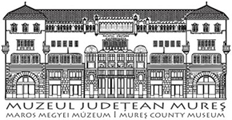Marisia - Maros Megyei Múzeum Évkönyve 29/3. (2009)
Rezi Botond, Nagy József-Gábor: Rescue Excavations at Chinari "Mociar" (Mureş County)
Rescue Excavations at Chinari “Mociar” (Mure$ County) 99 Because of the high fragmentation of the material, most of the pottery fragments belonging to the walls or body of the vessels, it was impossible to include them in one of the characteristic forms. Typologically, we have identified various shapes as follows in the graphic below: Graph. III. Distribution of pottery shapes. 1. Pottery fragments; 2. Pots; 3. Bitronconic vessels; 4. Bowls; 5. Deep bowls; 6. Shallow bowls; 7. Miniature vessels; 8. Globular vessels; 9. Mugs In the category of the pots we can determine three shapes based on the shape of the body and rim: “bag-shaped” vessels with straight2 or slightly curved body and rounded outcurved rim (Fig. VIII/1, 6; IX/7; XI/21, 22, 23), with straight rim (Fig. VIII/2, 4) or incurved rim (Fig. XI/25); medium sized pots with rounded and outcurved rim, conical curved neck, well-defined upper part of the body (Fig. IX/9-12; X/16-18; XI/24, 26); pots with curved body, short neck, outcurved rim (Fig. VIII/3, 5). On the rim or body of the “bag-shaped” vessels there small knobs3 can be placed (Fig. VIII/4; IX/7, 8; X/16, 17, 19, 20; XI// 23)4 5. The large bitronconic vessels (Fig. XII/30-34; XIII/35—43; XIV/44-49) with outcurved rim, cylindrical neck, globular well-defined body, are characteristic for the early Iron Age and have analogies in entire the area of Gáva Culture3 at Red6 *, Obreja , Teleac8, Media§9, Uioara de Jos “Grui”10 11 and Stolna “Podurile Domne^ti”11. The bowls represent a very common type. In most of the cases the bowls have a conical shape with an outcurved (Fig. XVII/No. 77, 79, 80, 82-85; XVIII/No. 86) or incurved rim (Fig. 2 Porumbenii Mari (Benkő 1992, 7. tábla/10); Mediae “Cetate” (Pankau 2004, Tafel 19/1). 3 Gogältan 2001, 192, pl. I, nr. 3-4. 4 Porumbenii Mari (Benkő 1992, 7. tábla/10). 5 T. Kemenczei dates the settlement from Nagykálló “Telekdomb” in Ha Ai, in the Late Bronze Age II from Hungary (Kemenczei 1982, 95). Later Kemenczei returnes on the date Ha A2. Chronologically P. Patay, places the settlement from Poroszló “Aponhát” in Ha A2 (Patay 1976, 200 sq.). T. Kemenczei dates the Late Bronze Age III from Hungary to Ha A2-Bi (X-IX centuries B. C, Kemenczei 1982, 91). 6 Székely 1966, 11, pl. II, 3, 4, pl. Ill, 3, pl. IV, 1-4. ' Soroceanu 1973, 497, 512 pl. VIII, nr. 9. 8 Vasiliev et alii 1991, 80 sqq. 9 Pankau 2004, 49 sqq, Tafel 7, the tipology of bitronconic vessels. 10 Ciugudean 1994, 66, fig. 4, nr. 1; Rustoiu 1997, p. 22. 11 Rescue excavation at the Bor$-Bra§ov Motorway, km 46+300, in the course of processing, information Adrian Ursutiu.
